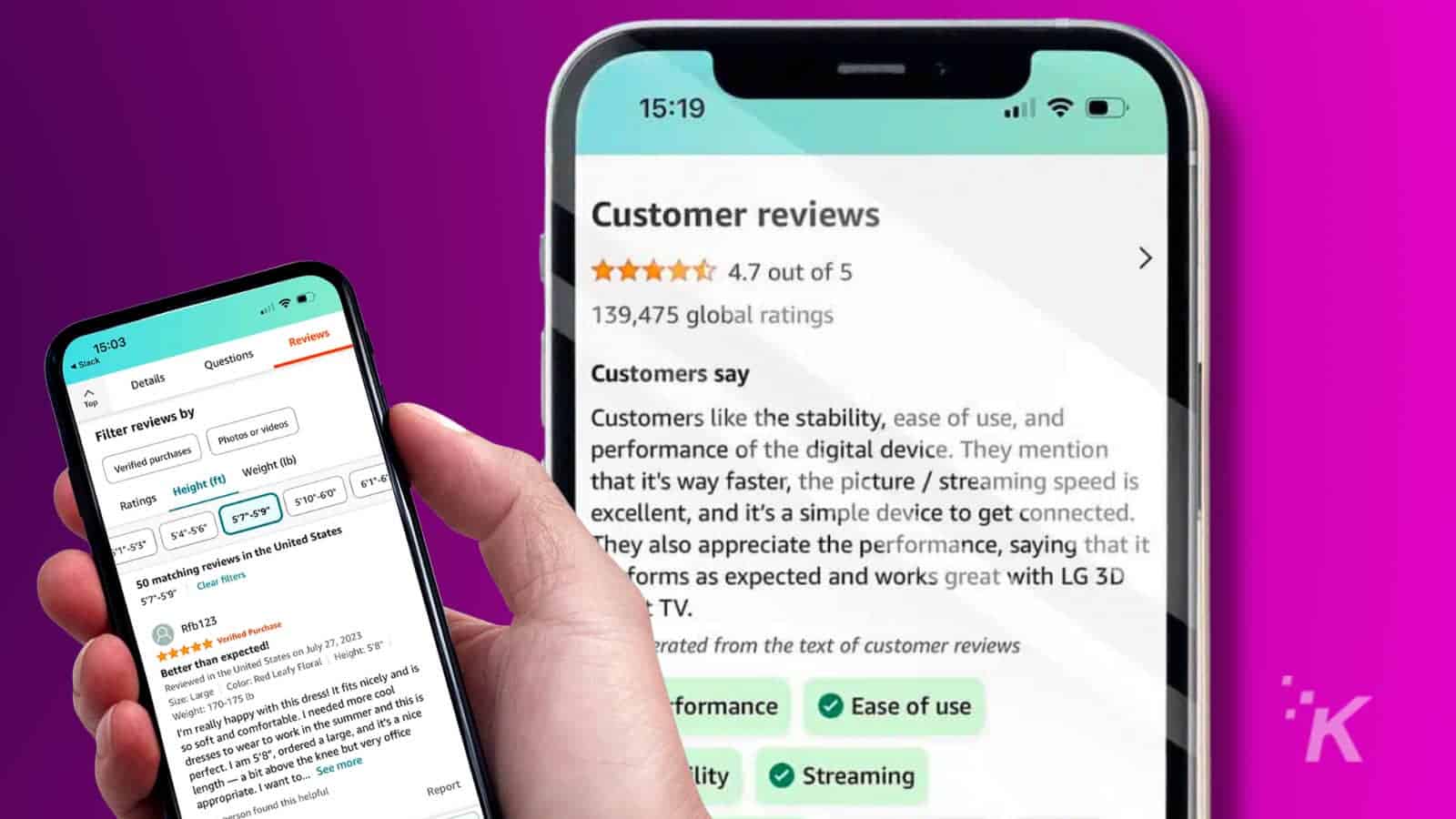Business
Customer reviews & ratings are essential to boost website traffic
Investing your time in customer reviews and ratings will benefit both you and the customers you serve.

Just a heads up, if you buy something through our links, we may get a small share of the sale. It’s one of the ways we keep the lights on here. Click here for more.
Product reviews and ratings are essential to increasing traffic on your website. According to Consumer Reports, 90% of users read online customer reviews before buying a product.
Graham Charlton of Econsultancy said that user reviews go a long way to improving SEO: “Search engine spiders like unique content that is regularly updated, and user reviews are a great way to attract more content.”
Reviews increase clickthroughs and long-tail targeting, and potential buyers now take reviews into consideration at the very beginning of a search.
Because many agree that user-generated content is key to online marketing, it is remarkable that businesses often neglect this aspect of their marketing strategies.
For example, the Harvard Business Review reported that 70% of corporations disregarded the negative comments users tweeted about their products.
Leveraging customer reviews

Once you’ve started accumulating customer reviews, there are various ways of leveraging them in your favor.
Consider asking customers the question, “Was this review helpful?” Amazon uses the information it gathers from this question to highlight the three most helpful reviews of a given product.
Other ways of leveraging reviews are by using charts to show the breakdown of positive and negative reviews, asking for specific details in the reviews, and using your reviews in PPC advertising, as well as in offline advertising.
Companies can also hire a third-party review provider, such as Revoo, Bazaarvoice, or Yotpo. Using tools like Linkpop, you can curate social media reviews to highlight them better.
Yotpo’s features help companies grow their brands
Yotpo, which counts Sears and Staples among the companies it has benefited from, features a tool designed especially for mobile.
The Mail After Purchase (MAP) tool is customizable and intuitive and keeps the process of leaving a review simple for both the company and the customer.
Another of Yotpo’s features helps businesses collect user-generated content. Customers can easily upload photos of themselves with a product as part of their review.
Companies can moderate which photos get featured, and future buyers can then more easily visualize themselves with the product the company is selling.
This is particularly beneficial for clothing sales, where people with different body types wonder how a garment will look on them instead of an ultra-thin, super-tall model.
Yotpo also does the critical work of building relationships between buyers and brands by helping businesses engage with their customers even after the customers have decided to purchase a product.
How to get great customer reviews

But how, as a business, do you get user-generated content to leverage in the first place? The single most important thing you can do to get great reviews is deliver an amazing customer experience.
Yet, after delivering an excellent product, many companies neglect the obvious task of even asking their customers for reviews.
When you do request a review from a customer, it’s important to keep that process as simple as possible.
Social media is vital to acquiring positive customer feedback, especially because millennials tend to dislike leaving traditional reviews but are quite comfortable with using social media to share their experiences.
Erik Qualman, the best-selling author of Socialnomics, stressed the impact of social media.
He noted that 53% of people on Twitter promote products in their tweets, and 93% of potential buyers claim social media impacts their choices.
But while social media is important, the traditional review remains a significant part of growing your brand.
How you ask for reviews is critical. You should target your requests to specific people, ask them to be honest with their feedback, and time your requests to when people are most likely to respond.
He encourages businesses to respond to all reviews, positive or negative. This advice corresponds with Qualman’s encouragement to utilize social media.
People love attention, and interacting with them, even in response to positive feedback, helps build relationships and demonstrates the quality of your company.
Bad reviews can work in your favor

While good customer reviews are obviously the most desirable kind, negative reviews can work in your favor if you know how to respond to negative reviews.
If you’re savvy enough, you can actually turn them into assets instead of liabilities.
First, keep in mind that the person leaving you a bad review could be in a bad mood or might not be the best match for your product.
But no matter why the customer is upset, it’s important to deal with the issue quickly and graciously.
If you do so, you’ll not only have a better product in the long run, but you’ll also have the opportunity to turn a disgruntled customer into a happy one.
Winning people over in this way can make them even more committed to your brand than they would have been had they not had the problem in the first place.
A mix of bad and good feedback increases a company’s credibility, provided the negative feedback isn’t overwhelming. It is all part of a well-balanced reputation management strategy.
It’s not too late to invest in user-generated content
If you’ve been neglecting the important task of building user-generated content, it’s not too late to act. Investing your time in customer reviews and ratings will benefit both you and the customers you serve.
Have any thoughts on this? Drop us a line below in the comments, or carry the discussion to our Twitter or Facebook.
Editors’ Recommendations:
- The best SEO tools for everyday use
- How to attract more customers to your local business
- Five social channels under-utilized by businesses
- 5 ways your nonprofit can rock social content marketing




























